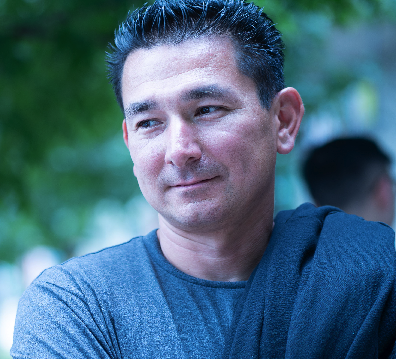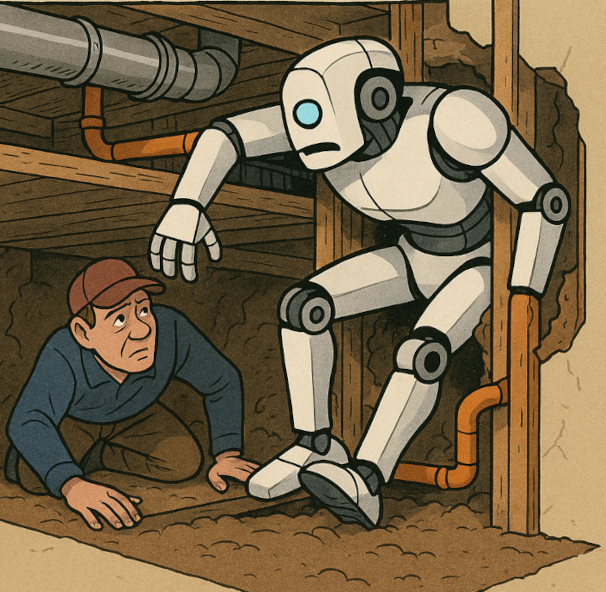NVIDIA’s GPU Technology Conference (GTC) just wrapped up in Paris, and GTC is often dubbed the “Super Bowl of AI”. I was fortunate enough to speak virtually on the topic of Explainable AI and attend the North American version in San Jose this year. I was impressed by the quality of the sessions and the breadth of subject matter covered. You can geek out on the cutting edge of AI techniques to discover some of the amazing things happening today, such as AI-assisted healthcare.

Part of my day-to-day job is thinking about new interesting ideas and topics to present at AI/ML conferences like GTC. Because of this, I thought it would be worthwhile to examine what the NVIDIA GTC selection committee considers talks worthy of being presented in-person on stage. GTC might be hosted by the world’s leading GPU maker, but you’d be mistaken to think that it’s just about the hardware they build. In reality, the overwhelming majority of sessions focus on software, AI solutions, and what you can do with NVIDIA’s technology… not the chips themselves. This isn’t just my opinion; it’s supported by the numbers and the way GTC is organized. That’s the focus of this blog post here… let’s dive right in.
GTC Is About What You Can Do, Not Just What You Have
NVIDIA is no longer just a chipmaker cranking out GPUs. The company has been transforming into a full-stack AI platform provider. As one observer put it, NVIDIA went “from being a hardware company” to also wanting to be an AI software company. This shift is evident at GTC. The conference features hundreds of sessions across AI domains from computer vision and generative AI to robotics and healthcare… showcasing real-world applications and breakthroughs. In fact, GTC 2025 boasted over 1,000 sessions with 2,000+ speakers (in-person and virtual), covering everything from large language models to cloud computing and scientific discovery. The focus is clear: it’s on how NVIDIA’s platform is used to solve tough problems and transform industries, rather than on plain product pitches.

This approach makes sense. People attend GTC to learn and be inspired by what’s possible with AI. They want to hear how a researcher used GPUs to decode the human genomes faster, or how a startup is deploying AI at the edge in hospitals… not a sales presentation about specs or cloud capabilities. NVIDIA’s own messaging around GTC highlights “breakthroughs happening now” and how AI is “powering the everyday brands that shape people’s lives” across various industries. The underlying hardware is crucial, but it’s the enabler, not the star of the show.
By the Numbers: Software and Solutions Dominate GTC Sessions
I took a deep dive into the latest GTC session catalog in Paris (this was also true of San Jose) and categorized the typical speaking sessions (excluding workshops, trainings, casual chats, etc). There were 485 in-person talks at the GTC event in this European event last month, spanning multiple topic tracks. The breakdown by topic highlights that software, AI applications, and data science topics dominate the agenda, whereas discussions on pure hardware are relatively few. Here’s a snapshot:
- Generative AI: 81 talks (only 9 were sponsored slots, ~11% “paid”)
-
Simulation / Modeling / Design: 67 talks (2 sponsored, ~3%)
-
Data Science: 25 talks (0 sponsored, 0%)
-
Computer Vision: 21 talks (all content, 0% sponsored)
-
Edge Computing: 16 talks (0 sponsored, 0%)
-
MLOps (AI Deployment): 10 talks (all content, 0% sponsored)
-
Natural Language Processing: 6 talks (all content, 0% sponsored)
-
Tooling (Dev Tools, Frameworks): 33 talks (1 sponsored, ~3%)
-
Cloud Services and Infrastructure: 55 talks (27 sponsored, ~49%)
-
Hardware (GPUs & chips): 25 talks (16 sponsored, ~64%)
In plain terms, the “Generative AI” track alone had over 80 sessions, reflecting the huge interest in what people are building with large language models and AI creativity. “Simulation/Modeling/Design” was another big track with dozens of sessions. Traditional AI application areas, such as vision, NLP, and data science, collectively accounted for many talks as well. These are the kinds of sessions where speakers share research results, developer tips, and success stories using NVIDIA’s software stacks and GPUs.

Notably, none of the talks in Data Science, Vision, NLP, Edge, or MLOps were paid talks… they were all merit-based content. The same was true for the vast majority of Generative AI and Simulation track talks (over 90% of those were non-sponsored content). This means the speakers earned their spot by having something interesting to say, not by buying a slot.
Contrast that with the Cloud and Hardware categories. The Cloud track (covering topics like cloud GPU services, data centers, and infrastructure) had about half of its talks come from sponsored sessions. The Hardware track, sessions about new chips, systems, and so on, was even more skewed: nearly two-thirds were “paid talks.” In other words, many of the sessions about cloud or hardware were more or less vendor presentations that likely came as part of a sponsorship package. This wasn’t a fluke or an oversight by NVIDIA; it appears to be by design.
Why Some Tracks Have So Many Sponsored Talks
If a conference track has a high percentage of sponsored talks, it’s a sign that the organizers expect those proposals could be salesy or promotional in nature. NVIDIA knows that a talk titled “Buy Our Cloud GPU Service!” isn’t what most attendees are eager to hear in any kind of session. The non-tech equivalent of this would be walking into a room only to find out you are trapped listening to a pitch to buy a timeshare in the Bahamas or something.

By comparison, a talk titled “How We Optimized Healthcare NLP Models on GPUs in the Cloud” is much more appealing… if it focuses on the solution and not just a particular product. (Big if… if you ask me) GTC organizers seem to allow the more promotional talks a space at the table only if the presenters pay for the privilege (through sponsorship). This keeps the main content tracks filled with talks that are interesting to the audience on technical or innovative merits, and pushes anything overtly commercial into clearly marked slots.
Think about it: Hardware and Cloud are inherently areas where NVIDIA’s partners (or NVIDIA itself) might be tempted to pitch their latest and greatest. It’s not that hardware advances aren’t important… after all, NVIDIA is one of these hardware chip makers. GTC always has some exciting new GPU or system announcements, which are typically covered in keynotes or select sessions. But an hour-long breakout session that is essentially a product advertisement is not what GTC is curated for (by design).
Therefore, if Cloud providers or hardware vendors wish to present their offerings, they often appear as sponsors (the data indicates that 49-64% of those sessions were paid). This is a strong hint of what NVIDIA is looking for (and not looking for) in the session selection process.
What GTC Wants: Inspiring Use-Cases, Open Sharing, and Real Techniques
NVIDIA GTC sessions are meant to educate, inspire, and enable the audience of developers, researchers, and tech leaders. The best sessions tell a story of solving a real problem using AI and GPUs. They often involve sharing code, frameworks, or lessons learned that others can apply. In fact, open-source tools and projects are frequently front and center. From NVIDIA’s own perspective, many of their recent announcements have incorporated open-source elements; for instance, open-source foundation models for robotics were highlighted at GTC 2025. This open theme extends to the sessions, where speakers frequently discuss using open-source libraries (such as PyTorch and CUDA libraries), contributing to them, or building solutions based on open standards.
This alignment with open source is no coincidence. The open source community thrives on knowledge-sharing and collaboration, not on sales pitches. GTC, in spirit, tries to cultivate that same vibe. Attendees should walk away with new ideas, sample code, or a GitHub repo to check out, and a sense of possibility.

NVIDIA’s own conference description emphasizes how AI is transforming everything from healthcare to automotive to finance… again focusing on applications and impact. As a GTC attendee myself, I’ve noticed that the energy is much higher in sessions where the speaker is teaching something or demoing a breakthrough. To be fair, even the sponsored talks can contain useful info… but only if the speaker remembers to focus on how to solve problems using their tech, rather than just what their tech does.
Another trend… GTC content has become increasingly practical and concrete over the years. One conference veteran noted that the 2024 GTC was about “what if” future possibilities, while 2025 shifted to “what is”, thereby focusing on how to advance current AI projects to the next level. That tells us NVIDIA is curating sessions that speak to today’s challenges and solutions, not just wild future speculation. If you’re proposing a talk, you’re more likely to be selected if you can demonstrate tangible results or techniques that attendees can use now (or very soon), as opposed to just theoretical ideas.
How to Get Your Talk Selected for AI/ML Conferences
From the data and observations above, we can distill a few clear guidelines for anyone hoping to speak at NVIDIA GTC (or really any top-tier AI/ML conference):
- Focus on Solving a Problem: Frame your talk around a compelling problem or use case you tackled with AI. For example, instead of a generic “About Our GPU Product,” present “How We Reduced Training Time for Medical Imaging Models by 80%”. Show the audience how you did it, and share numbers, insights, or code repo. GTC selectors appreciate real-world applications that have a tangible impact.
-
Keep It Technical and Educational: Contrary to popular belief, GTC is a developer-centric conference. Attendees appreciate code snippets, demos, benchmarks, and concrete tips. Don’t shy away from the technical aspect. Explain how you achieved your results (e.g., which SDKs, which algorithms, which optimization tricks). Make it a learning experience for the audience.
-
Avoid Marketing Hype: Steer clear of marketing fluff or self-promotion in your proposal and content, but above all, talk about something people actually want to hear. If you wouldn’t sit in on a session, odds are others won’t want to either. Phrases like “revolutionary platform” or slides of your product catalog are red flags, NVIDIA’s organizers can sniff out a sales pitch a mile away… and they’ll route those to sponsored slots (or reject them). Be honest and straightforward about what the audience will get from your talk.
-
Highlight Open-Source and Community Angle: If your solution utilizes open-source tools or you’re open-sourcing your work, mention that. Talks that share code or frameworks with the community inherently feel more like knowledge-sharing (which is exactly the spirit GTC wants).
-
Showcase NVIDIA Tech in Context: Since this is NVIDIA’s conference, it doesn’t hurt (as in you should at least mention) that your solution leverages their technology, but do it in a way that feels natural. It’s fine (and even expected) to use CUDA, RTX, or NVIDIA SDKs in your project; just don’t make the discussion about those tools themselves a product. Instead, make it about what they enabled.
-
Keep the Audience in Mind: Ask yourself, “What will someone watching my talk learn or be inspired to do?” GTC is meant to spark new ideas. If your talk proposal answers that question with something concrete, you’re aligning well with what GTC wants.
Wrapping It All Up!
To sum it up, NVIDIA is seeking talks that ignite curiosity and demonstrate to attendees how to achieve great things with AI, utilizing the hardware and software as tools. The hardware announcements will always have their place on the big stage (keynotes and a few deep-dive sessions), but the heart of GTC is all the amazing stuff people are doing with that hardware/platform. By structuring the conference this way, NVIDIA keeps GTC valuable and authentic for its audience. As an AI/ML developer and data scientist myself, it’s the only way to run a conference or get me to sit through a session at one.
The Full Stop Thought… if you want to speak at GTC (or any AI/ML conference for that matter), bring real substance. Tell a story of innovation or problem-solving, backed by data and live demos. Align with the interests of the community (open science, open source, and cutting-edge applications). NVIDIA’s selection trends show they favor the inspiring engineer or researcher over the slick salesperson; I have definitely noticed this myself while entering this very data science driven world. The GPUs and cloud instances are just means to an end… what matters is the awesome things you accomplished with them. Keep that focus, and you’ll not only increase your chances of getting a CFP accepted but also deliver a talk that resonates with one of the largest AI audiences in the world. And that’s a win-win for everyone.















